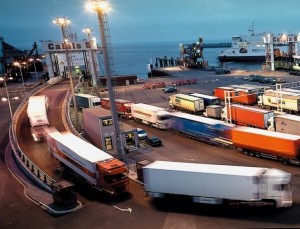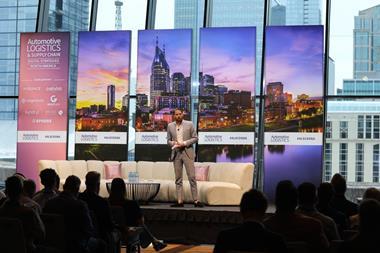 The closure of the French port of Calais because of industrial action taken by the Syndicat Maritime Nord union has hit freight movements in and out of the UK. While the port has now been reopened, disruption is continuing this week, something that has been compounded by incidents of migrant trespass, with two deaths reported in as many weeks following attempts by people to board freight trains.
The closure of the French port of Calais because of industrial action taken by the Syndicat Maritime Nord union has hit freight movements in and out of the UK. While the port has now been reopened, disruption is continuing this week, something that has been compounded by incidents of migrant trespass, with two deaths reported in as many weeks following attempts by people to board freight trains.
This week the Freight Transport Association (FTA) warned that the disruption had reached dangerous levels for the safety of both drivers and risk. “The danger to migrants, scale of the delays, disruption to supply chains and, above all, risks to drivers’ health and safety have reached unacceptable levels.”
The action by the Syndicat Maritime Nord union was in response to the transfer of vessels from MyFerryLink by Eurotunnel to DFDS following Eurotunnel’s takeover of the former SeaFrance operation.
As with other sectors, freight experts expect that re-establishing normal service in the automotive supply chain will take some time, hampered further by the varying standards in accuracy among OEMs regarding their visibility of material flows.
In the middle of last week there were 30-mile (50km) queues on the UK’s M20 motorway leading up to the port of Dover. Similar tailbacks from Calais were seen in France. The disruption hit all sectors, including the automotive industry, with carmakers forced to rely on time critical shipments of inbound parts and revised production schedules.
“It is a very complex picture," said Fred Cesarion, commercial director for UK-based expeditor, C4 Logistics. "We have obviously been very busy on behalf of our customers who depend upon us for time-critical deliveries. Automotive companies have also made creative changes to schedules to accommodate for delays and organisations such as ours are very busy trying to take alternative routes or use air charter services, but this is not the panacea for all. It is very expensive for all parties, particularly at times of high demand."
Carmakers including Honda, Jaguar Land Rover and Nissan were cautious in their response, stating only that they were closely following the situation.
"We continue to monitor the situation regarding the industrial action in Calais closely,” said a spokesperson for Jaguar Land Rover. “At present production remains unaffected.”
Logistics providers handling the supply of parts, however, have indicated that the demand for time critical services had risen sharply.
“The volume of charter enquiries we received spiked early [last] week, as OEMs sought to plug a potential gap in supply chains as a result of delays caused by the Calais protests,” confirmed Brad Brennan, managing director of Evolution Time Critical, which provides emergency logistics services.
OEMs can’t fix a problem they cannot see
However, the situation has been more complicated than a simple rise in demand for time critical services, including air charters, as OEMs try to work out the full extent of the delays to parts deliveries before committing themselves to that contingency.
“The benefit of working hard to plug a supply chain gap is quickly undermined when that gap later emerges as being just one of many,” said Brennan. “You can put up an umbrella in a rainstorm, but in a flood you will still get wet feet.”
The importance of understanding the full scope of the shortage is as much a concern for the service provider as it is for the OEM. According to another UK-based expeditor, Priority Freight, it is down to which OEMs have got the best visibility of material flow. Those with it are able to make quicker decisions about using emergency transport services.
“Those with less visibility are making decisions later in the day,” said Ed Bembridge, operations manager at Priority Freight. “That puts pressure on the availability of aircraft and the space available on it to make sure that there is capacity to move the goods.”
When traffic through the port of Calais was reopened on Thursday last week (July 2nd) OEMs were better able to make decisions on the most suitable course of action to resolve their material flow problems. Those OEMs and suppliers with good visibility of the supply chain were able to work out the location of their missing parts and which of them needed to be prioritised for expedited movement or replacement to maintain scheduled production.
“Vehicle manufacturer visibility throughout the supply chain is critical at this point, to accurately assess the knock-on effects of any delays suppliers may have encountered and to benefit from in-built flexibility,” said Brennan.
The knock-on effects can be serious given that OEMs are reliant for the majority of their European inbound flows on scheduled line-haul trucking services, which are often subject to delays in the feed of information. The situation is compounded by the fact that many truckloads of material are now in the wrong position to where they were scheduled to be.
“Trucks have been held up for a considerable amount of time, we are talking days not hours, so there is stuff in completely the wrong location,” said Bembridge. “Yes, assets can be brought in, but the whole cycle is at odds for the operators. I don’t think this situation is going to be resolved until all those operators have full visibility of where the material is.”
When that happens, OEMs and their suppliers then have to fight for available space on air charters for the parts most in need to maintain production. C4 Logistics, Evolution Time Critical and Priority Freight all admit it has been a very busy time.





































